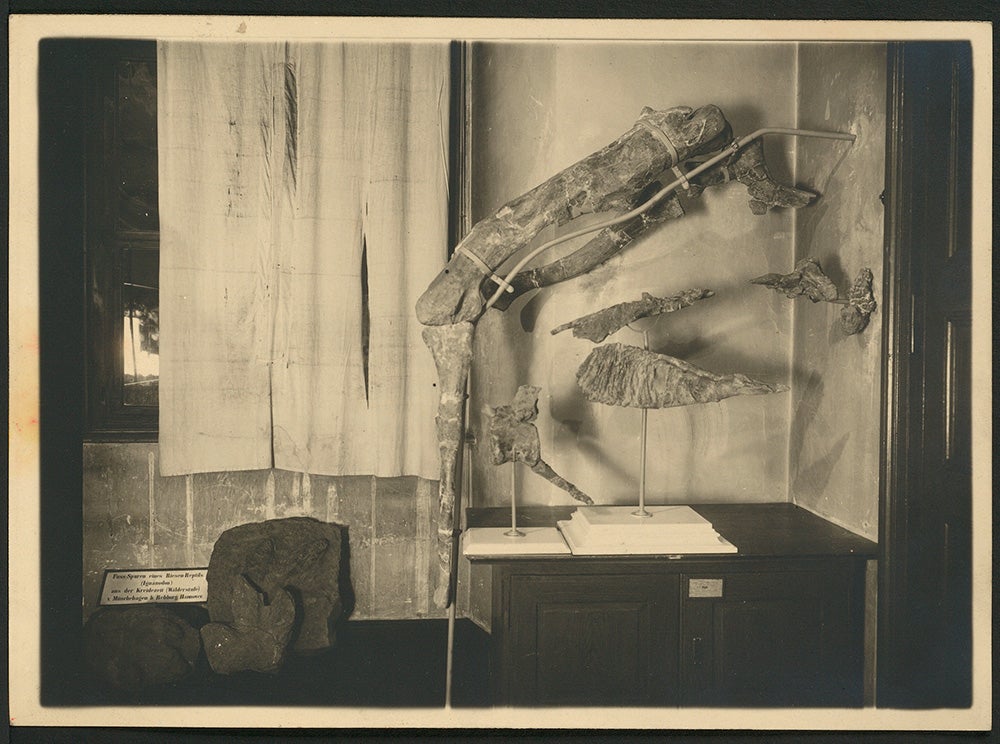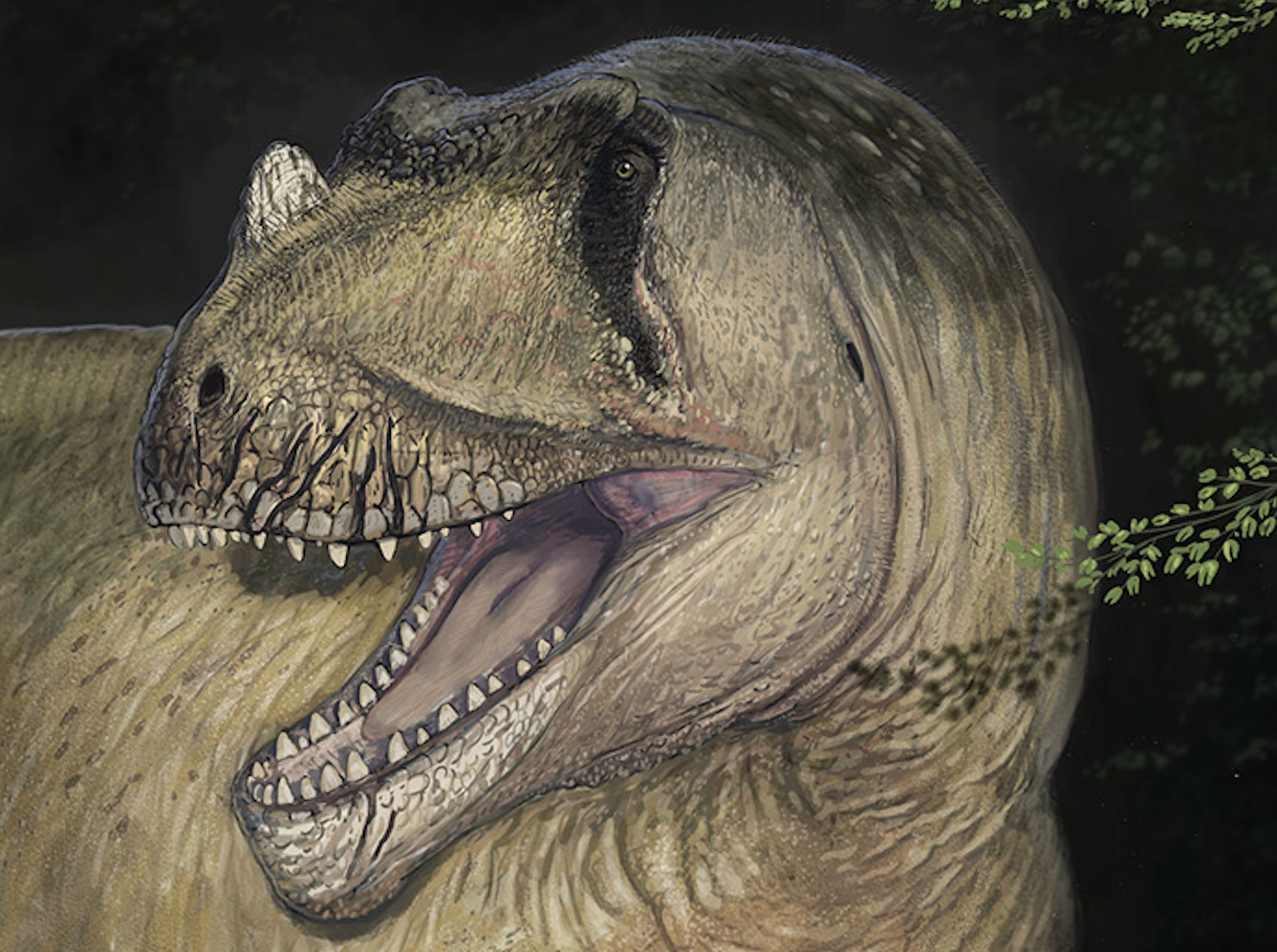
Sign up for our free Health Check email to receive exclusive analysis on the week in health
Get our free Health Check email
Get our free Health Check email
I would like to be emailed about offers, events and updates from The Independent. Read our privacy policy
Scientists have identified a new giant horned dinosaur species that roamed across modern-day North Africa about 95 million years ago, despite its fossilised remains being destroyed during the Second World War.
The 10-metre-long predatory dinosaur species, named Tameryraptor markgrafi, was discovered based on archive photographs of the dinosaur’s skeleton from before 1944.
Its original skeleton was described in 1914 after it was excavated in the Bahariya Oasis in Egypt and then stored together with other Egyptian dinosaur fossils in the Bavarian State Collection for Paleontology and Geology in Munich.
At the time, paleontologist Ernst Stromer von Reichenbach (1871-1952) assigned the fossil to the genus Carcharodontosaurus, meaning shark-toothed lizard.

Measuring about 10 metres long, it is one of the largest known land-based carnivores ever to have roamed the Earth – comparable in size to the slightly younger Tyrannosaurus rex from North America.
However, a large part of the dinosaur fossil collection in Munich, including those from Egypt, fell victim to bombing during the Second World War.
The only remnants of this 10-metre giant were Dr Stromer’s notes, illustrations of its bones, and some photos of the original skeletons.
Archived pictures show the original skeleton from Egypt, including parts of the dinosaur’s skull, spine and hind limbs before its destruction.
“What we saw in the historical images surprised us all. The Egyptian dinosaur fossil depicted there differs significantly from more recent Carcharodontosaurus found in Morocco,” said Maximilian Kellermann, the study’s first author.
“Stromer’s original classification was thus incorrect. We identified a completely different, previously unknown predatory dinosaur species here and named it Tameryraptor markgrafi,” Dr Kellermann said.
Researchers found from the images that the dinosaur had distinct symmetrical teeth and a prominent nasal horn.
Its genus name “Tamery” refers to the ancient name for Egypt and the species name honors Dr Stromer’s fossil collector Richard Markgraf, who excavated the dinosaur’s remains.

This species is related to the North African and South American Carcharodontosaurus and to a group of predatory dinosaurs from Asia, the Metriacanthosaurs, scientists say.
The findings suggest dinosaurs of North Africa were much more diverse than previously thought.
“This work shows that it can be worthwhile for paleontologists to dig not only in the ground, but also in old archives,” said Oliver Rauhut, another author of the study.
“However, a more comprehensive assessment of the Cretaceous predatory dinosaur fauna from the Bahariya Oasis would require the recovery of more fossils from the site,” Dr Rauhut said.

 By The Independent (Science) | Created at 2025-01-17 11:09:20 | Updated at 2025-01-17 19:52:06
9 hours ago
By The Independent (Science) | Created at 2025-01-17 11:09:20 | Updated at 2025-01-17 19:52:06
9 hours ago






